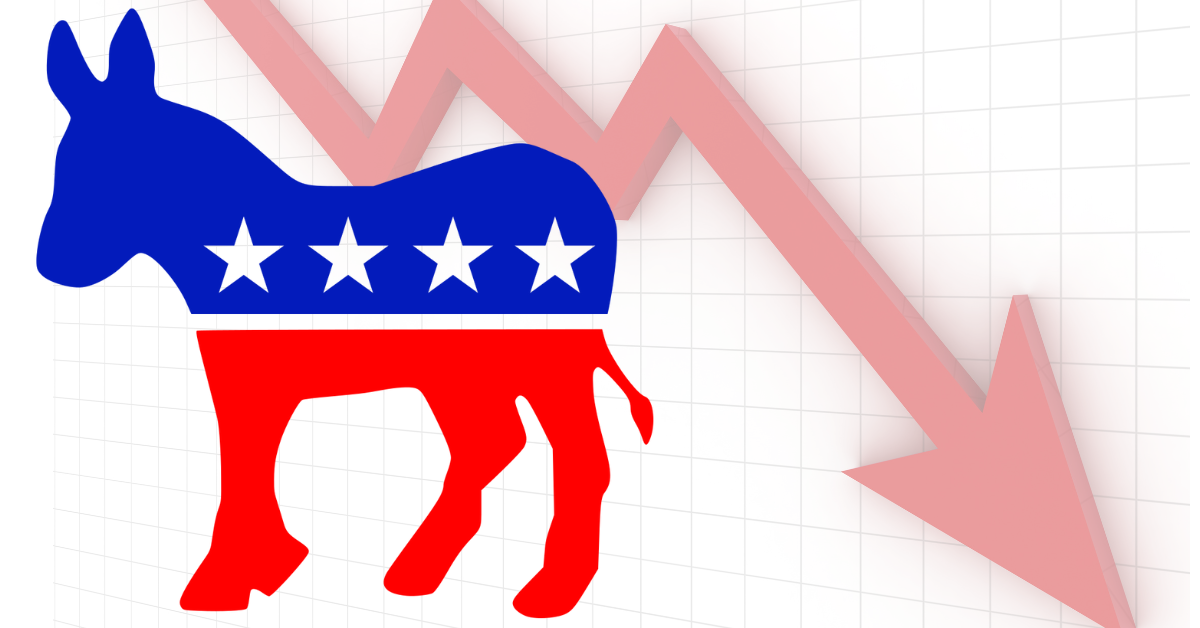Once their strongest firewall, college-educated voters are now slipping away as Democrats’ economic and cultural message falls flat.
What to Know:
- White college-educated men dropped from 50% Democratic support in 2020 to 45 percent in 2024, according to Catalist.
- Suburban independents rank cultural moderation as a top concern, even when skeptical of Trump.
- Harris’s alliance with Liz Cheney cut enthusiasm in Pennsylvania and Michigan by double digits, Progressive Change Institute found.
- Republicans reframed Trump as an economic steady hand while using targeted ads on taxes, crime, and schools to win suburban men.
- The gender gap among white voters widened to twelve points in 2024, making college-educated households a new political battleground.
For nearly a decade, Democrats counted on college-educated suburban voters as the ballast of their coalition. They were the firewall against Trump in 2016, the accelerant in 2018, and the decisive bloc in Biden’s 2020 victory. But in 2024, the foundation cracked.
According to Catalist’s post-election analysis, Democrats’ once commanding advantage among college-educated whites shrank, and the erosion was sharpest among men. That shift, subtle in topline numbers, proved devastating in swing states.
What the Data Shows
Catalist reports that white college-educated support for Democrats dropped from 54% under Biden in 2020 to 51% for Harris in 2024. The real story, however, lies in the gender split. White college-educated men slid from 50% Democratic in 2020 to just 45% in 2024. White college-educated women mostly held steady, but even their support softened in metro suburbs hammered by inflation and crime concerns.

Catalist. Figure 6: 2024 Party Voter Coalitions by Race
In effect, Democrats watched the “college gap” narrow for the first time in the Trump era. Instead of climbing, their share of college-educated voters dropped three points nationally and four in non-battleground states like New York and New Jersey.
Why It’s Happening
Economic messaging fell flat. While Democrats celebrated growth and stability, many voters were living a different reality, watching wages stagnate as the cost of daily life kept climbing. Catalist data shows white college-educated men, once a reliable bloc, dropped from 50 percent Democratic support in 2020 to just 45 percent in 2024.

Catalist. Figure 8: White Electorate Share by Educational Attainment.
Cultural debates added to the backlash. Suburban independents who had once leaned into Democrats’ promises of reform grew weary of endless fights over gender identity in schools and DEI battles on campuses. Polling from Echelon Insights found that even voters skeptical of Trump ranked cultural moderation as one of their top concerns.
The last piece was trust. College-educated voters no longer saw Democrats as the competent party they could rely on. Harris’s decision to campaign with Liz Cheney in the final stretch only reinforced that shift. According to the Progressive Change Institute, enthusiasm in Pennsylvania and Michigan dropped by double digits. What was supposed to project credibility came across instead as another symbol of elitism.
How Republicans Capitalized
Republicans seized on weaknesses that Democrats left exposed. Economic frustrations were channeled into hyper-local digital campaigns in places like Collin County, Texas, and Maricopa, Arizona, where ads spoke directly to college-educated men about taxes, crime, and school choice. At the same time, Trump’s image was softened.
Instead of being cast only as a culture warrior, he was presented as a steady hand on the economy, while surrogates carried out the sharper cultural attacks against Democrats’ perceived elitism. Republicans also tailored their appeals to families. Messaging on school safety, parental rights, and tax stability resonated with socially moderate, fiscally cautious parents, splitting college-educated couples in ways that eroded one of Democrats’ most reliable advantages in the suburbs.
What Democrats Must Do
The “college breakup” is not yet permanent, but Democrats cannot fix it with the same old playbook. Economic messaging needs to change. Voters live their politics in grocery aisles and at the movie theater, not in GDP reports. Catalist data shows white college-educated men drifted away because Democrats sounded abstract while daily costs kept climbing. Talking about $6 burritos and $7 tickets connects in ways that macro slogans never will.
Cultural humility is just as critical. Democrats assumed college-educated voters would welcome elite endorsements, but that assumption has collapsed. The Harris-Cheney alliance was meant to signal bipartisanship, but instead drained enthusiasm in Pennsylvania and Michigan. Voters do not want lectures. They want leaders who acknowledge cultural debates without sounding like enforcers of orthodoxy.
Finally, Democrats must rebuild trust locally. National promises no longer carry weight with voters who doubt Washington’s competence. Trust now comes from mayors who deliver services, school boards that keep classrooms steady, and community leaders who prove reliability close to home. For Democrats to win back the default of being the “safe choice,” they need to show competence where people live their daily lives.
Wrap Up
Democrats are standing at a dangerous crossroads. For nearly a decade, college-educated voters, especially in the suburbs, were the ballast of their coalition. They were the ones who blunted Trump in 2016, carried the blue wave in 2018, and helped secure Biden’s victory in 2020. But in 2024, that foundation cracked. Catalist shows white college-educated men have already drifted to just 45 percent Democratic support, and the gender gap among white voters has ballooned to twelve points, the widest in recent memory.
The breakup is underway. The choice Democrats face now is whether to treat this moment as a fight they can reconcile or accept it as the beginning of a permanent divorce.





